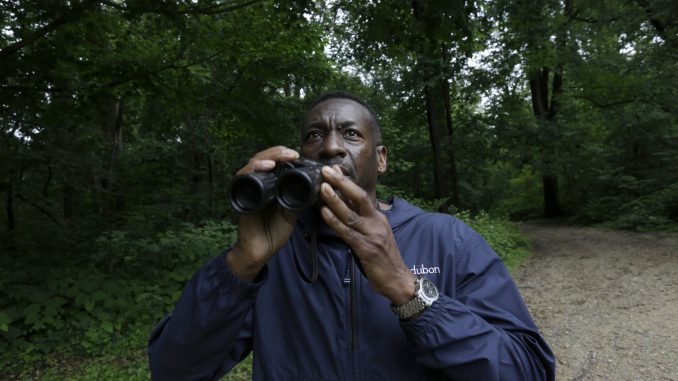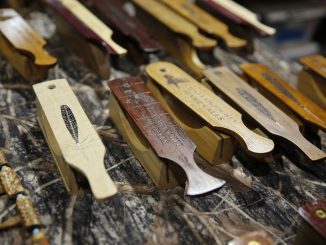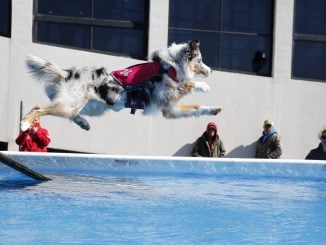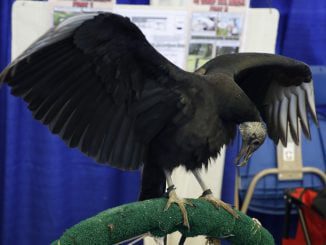
Jason Ward fell in love with birds at age 14 when he spotted a peregrine falcon outside the homeless shelter where he was staying with his family.
The now 33-year-old Atlanta bird lover parlayed that passion into a YouTube series last year. One of the guests on his first episode of “Birds of North America” was Christian Cooper, a black bird watcher who was targeted in New York City’s Central Park by a white woman after he told her to leash her dog.
A video capturing the encounter showed the woman, Amy Cooper (no relation), retaliate by calling the police and clearly referencing his race to raise the threat level.
Ward, who is black, said the video, even now, is “jarring” to watch. Butting heads with dog owners is common among birders but he’d never seen it take such a turn.
“Especially knowing Christian and how confident he is, hearing his nervousness and trembling, it shed light on how dangerous that situation could have been,” Ward said.
It didn’t culminate in any arrests, and Amy Cooper later issued an apology. But it has brought attention to how the great outdoors can be far from great for black people. Worries about discrimination, racial profiling and even subtle aggression keep some away. Furthermore, those fears can perpetuate the stereotype that hiking, camping and bird watching are “white” activities.
Christian Cooper’s encounter, which happened on May 25, the same day as George Floyd’s death at the hands of a white Minneapolis police officer, has been cited in nationwide protests against systemic racism and white privilege.
For black people, the incident was not surprising, said Carolyn Finney, author of “Black Faces, White Spaces: Reimagining the Relationship of African Americans to the Great Outdoors.”
“Systemic racism doesn’t stop at the park gates,” Finney said. “I’ve backpacked all over the world. … There are places in this country I would never go on my own. It is my loss. I just don’t trust the public.”
Birding can take participants to parks, woods and suburban streets. Depending on the setting, Ward said he adjusts his demeanor so he doesn’t seem threatening. He makes sure his face isn’t covered even if it’s cold. He always has his binoculars in plain sight rather than pulling them out of his bag.
“Just simple stuff like that I have to pay attention to that other people might say, ‘What? Come on dude! They’re just binoculars,'” Ward said. “If someone easily recognizes them as binoculars, it’s still a case in which I have to prove that I’m actually looking for birds occasionally.”
Mike Parr, president of the American Bird Conservancy, is white but his three sons are half-black. His youngest, who is 12, has gotten into birding. Cooper’s experience is now in the back of his mind.
“We personally haven’t come across anything like that, but as a parent, I am concerned about things that could happen to him. Birding isn’t all that well understood by people,” Parr said. “Rare birds sometimes show up around crazy places. I’m concerned he might face this sort of thing.”
Keith Russell, 63, an urban conservation program manager for the National Audubon Society’s Philadelphia-based chapter, said as a black person, he has his guard up if he’s searching for birds with binoculars near homes. But he’s never felt unsafe among fellow birders and hopes Cooper’s close call doesn’t scare off others.
“I think it’s very very important to be clear for anyone who might not understand this and take a superficial view of this. … It’s not dangerous to be a birder if you’re a person of color,” Russell said. But, he added: “There have been historical problems with access.”
He thinks for some black families, past discrimination and segregation at parks and other recreation sites may have set them on a path away from nature. That lack of connection to the outdoors then continues with the next generation.
“It can take a while to make that internal culture go away. I think it’s definitely starting to,” Russell said.
The misconception that most black people aren’t outdoorsy may get bolstered by history books. Finney, the author, said too often the history of U.S. conservation centers on white figures like naturalist John Muir. Meanwhile, less attention is paid to the hundreds of black soldiers who protected national parks after the Civil War.
The same goes for Hispanic communities. Many are unaware that Hispanics have connections with public lands going back generations, said Liz Archuleta, a county board supervisor in Flagstaff, Arizona, and co-founder of Hispanics Enjoying Camping, Hunting and the Outdoors.
“My mother tells stories about how at least twice a month on a Saturday, the entire Hispanic pioneer community of Flagstaff used to get together and go through the forest and have picnics,” Archuleta said. “It’s foreign to me when people say we have to get Hispanics to enjoy the outdoors more.”
The shift in support toward Black Lives Matter after Floyd’s death has every corporation and nonprofit re-evaluating how they can elevate black and brown voices.
In the bird-watching world, there’s already been an effort in recent years to do that. The National Audubon Society, which was established in 1905 to preserve birds and their habitat, has 1.8 million members. Approximately 198,000 identify as people of color.; only 45,000 identify as black or African American.
“Obviously, that’s not reflective of where the U.S. population is,” said Rebeccah Sanders, senior vice president of the organization’s state programs.
The group is trying to recruit more minorities. Staff training now includes ways to intervene if a team is restoring a habitat and one member is mistreated because of race or another trait. In the last year, they have set up chapters at dozens of colleges, including historically black ones. In 2019, Audubon offered nearly 100 internships and fellowships. Almost half were filled by people from diverse backgrounds or communities.
“As our staff and our membership base become more representative, it changes who you are,” Sanders said. “Those perspectives make us ask different questions and change some of our decisions.”
Environmental organizations are making universal statements that the outdoors belong to everyone but, Finney said, they have to address that it’s simply not the same for black communities.
“The National Park Service and others want to engage diverse communities and often are bringing kids in,” Finney said. “How are they supposed to feel if a black man who went to Harvard and sits on the board of the Audubon Society is getting accosted? How is some black teenager going to feel about their ability to feel safe and welcome?”
Since Christian Cooper’s video, several black professionals have reached out to Ward via social media to inquire about birding.
“‘We’re definitely getting feedback from a lot of people who are saying ‘You know what? I definitely want to get a pair of binoculars now,'” Ward said. “‘I thought this was boring and for people who didn’t look like me.'”



